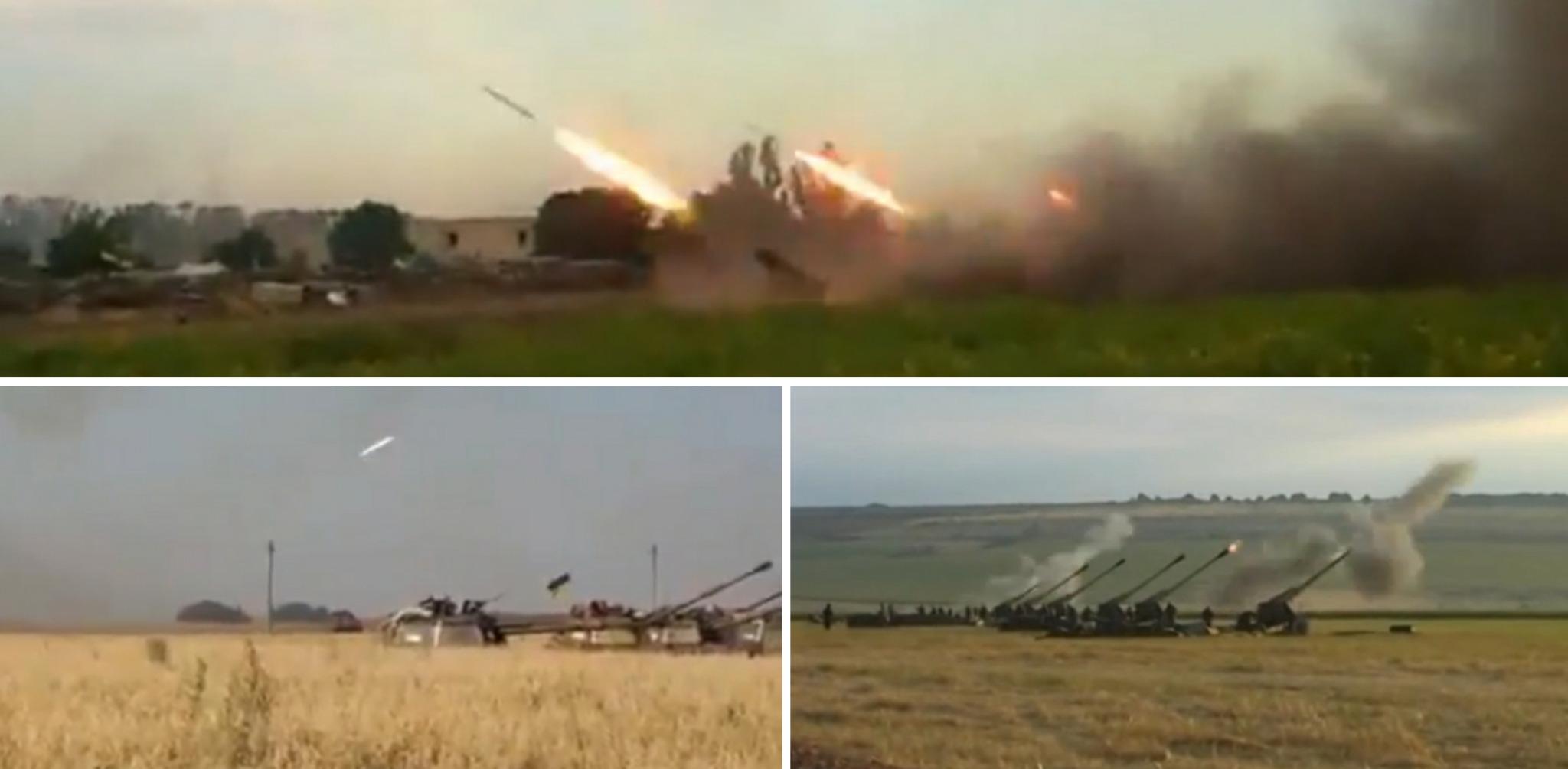Ukrainian Anti-Terror Operation tightens net around Donetsk as Ukrainian forces push toward MH17 crash site
How far will Vladimir Putin go to stave off a Ukrainian victory?
THE battle for eastern Ukraine may be entering a decisive phase. Since early July Ukraine’s re-energised armed forces have been on the offensive against 15,000 or so Russian-backed separatists. The Ukrainians are close to achieving two important objectives: surrounding Donetsk, the region’s biggest city, and establishing some control over border crossings through which Russia has been sending arms convoys. But the next stage of the intensifying conflict could be bloodier. Much will depend on how far Russia’s president, Vladimir Putin, is prepared to go to try to save the separatists from defeat.
Map show situation on the ground until July 28 2014.
Ukraine, under its newly elected president, Petro Poroshenko, used a poorly observed ten-day ceasefire in June to prepare a much more aggressive campaign, according to a senior Pentagon official. Its main elements were the use of air power to provide close support for ground troops and a new willingness both to take casualties and to put civilians at risk from shelling. The Americans are contributing “nonlethal” help in the form of intelligence, military advice and $20m worth of kit, including Kevlar body armour.
The first breakthrough came on July 5th. After an artillery bombardment and air strikes by Su-25s (Soviet-era ground-attack fighters), Ukrainian forces sent rebels fleeing from the strategically important towns of Sloviansk, which had been the insurrection’s military headquarters, and Kramatorsk. Confidence was high that the separatists, armed mainly with light weapons, as well as elderly tanks and artillery pieces, many of which they had left behind in their retreat, would soon be making their last stand. Most are now holed up in Donetsk and Luhansk; support from a war-weary local population is ebbing.
But the fall of Sloviansk has provoked Mr Putin to ramp up the supply of arms to his proxy forces in the Donbas region. Since mid-July long convoys of tanks, Grad rockets and air-defence missiles have been rolling in from Novoshakhtinsk, a checkpoint 80km (50 miles) from a training and deployment site set up for the rebels near Rostov. One of these almost certainly contained the Buk missile battery that shot down Malaysia Airlines Flight MH17 on July 17th.
There is also mounting evidence that Russia is firing artillery shells and missiles from its territory. Russian fighters, helicopters and surveillance drones fly along the border and sometimes over it. On July 11th a Grad rocket attack killed 30 soldiers in the Sverdlovsk district. The Ukrainian government claims that Russia shelled its forces with Grad rockets over three days in late July. On July 27th the Pentagon released satellite images showing “ground scarring at multiple rocket-launch sites” on Russia’s side of the border.

Russians caught systematically firing GRAD and shelling from Russian soil unto Ukrainian territory.
Having taken ground both to the north-east of Donetsk around the town of Horlivka and in the south-east at SavurMohyla, a strategic height not far from the crash site of MH17 (see map), the government is now trying to cut off the flow of weapons to the separatists. The Ukrainian plan was to create a 5km buffer zone along the border. But Russian rocket fire has made that more dangerous, says Anton Mihnenko, a Kiev-based security analyst.
Even more perilous will be the task of winkling the separatists out of their defensive positions in Donetsk and Luhansk, cities with a combined population of 1.5m. This will require some combination of street fighting and shelling, both certain to pile up the casualties.
Militants convoy in Donetsk.
Ukraine’s offensive already seems to have featured pretty indiscriminate use of artillery. By July 26th 1,129 people had been killed in eastern Ukraine, 799 of them civilians, the UN has reported. Mr Mihnenko says that in order to avoid killing civilians, government forces will rely more on special forces. But shells have already begun falling in the centre of Donetsk: the potential for things to go lethally wrong is great.

The biggest question is just how far Mr Putin will go to support the militants. He might settle for the insurrection evolving into a protracted insurgency that exhausts the government in Kiev enough to bring it to the negotiating table. As civilian casualties mount, the prospects for national reconciliation recede, which plays into Mr Putin’s hands.
He has already shown that he will go to considerable lengths to prevent Mr Poroshenko from declaring victory and excluding Russia from any future settlement. Whether that means even more direct intervention—15,000 Russian troops are sitting menacingly on the border—perhaps not even Mr Putin yet knows.

No comments:
Post a Comment